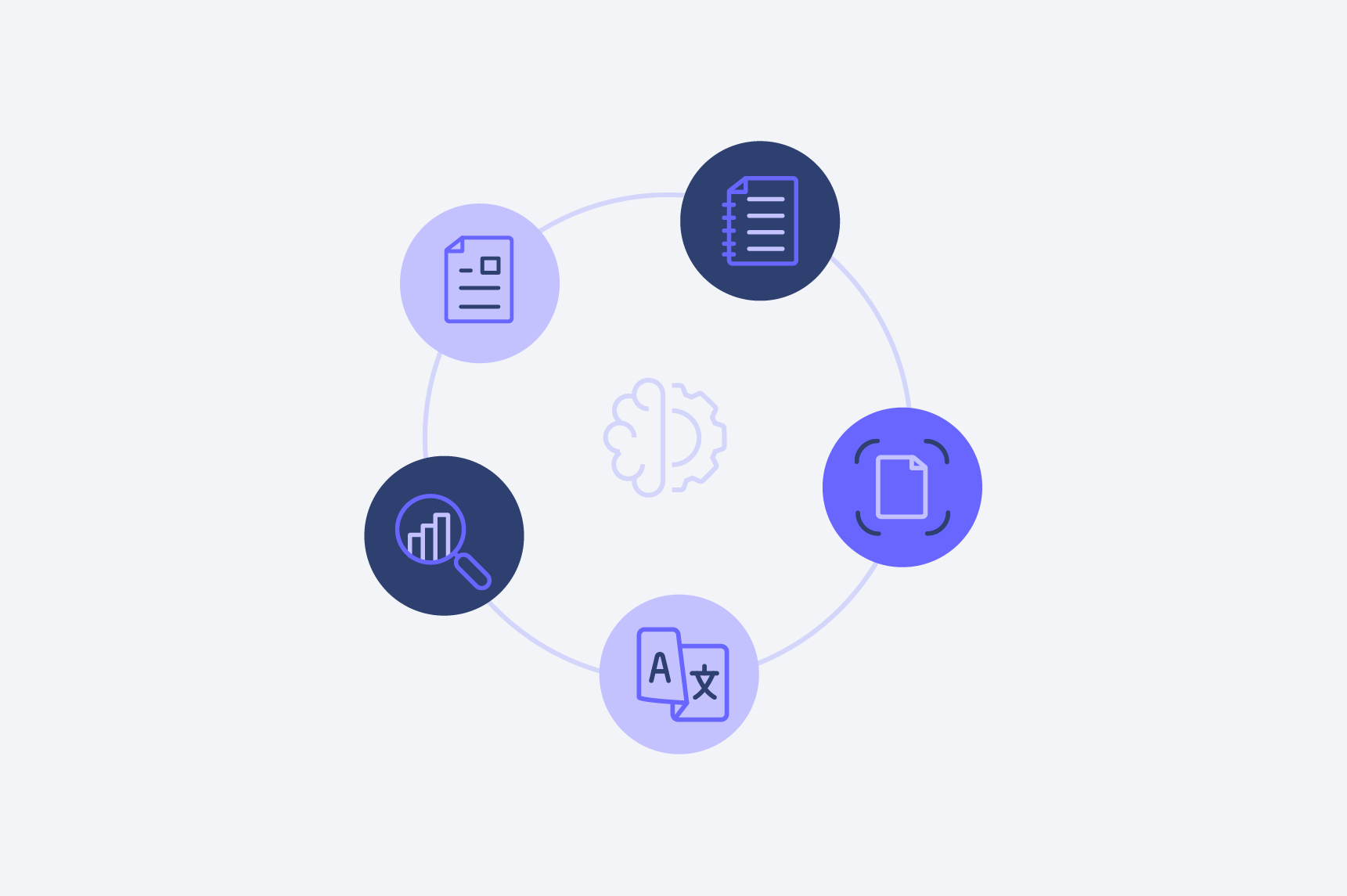Learn how the Intelligence Cycle helps you turn raw information into actionable intelligence and empowers security teams to make smarter, faster decisions.
Most organizations are drowning in data but starving for intelligence. They collect mountains of information from threat feeds, logs, vulnerability scanners and open sources, yet still get blindsided by threats. The problem isn't a lack of access; it's the absence of a structured process to transform that raw data into actionable intelligence.
That's where the Intelligence Cycle comes in. This isn't some theoretical framework. It's a battle-tested methodology that's been refined by military and intelligence professionals for decades, and when properly implemented, it becomes an organization's blueprint for making intelligence-driven security decisions.
What Is the Intelligence Cycle?
The Intelligence Cycle is a systematic process for developing raw data and information into finished intelligence that leaders can use to make informed decisions. Think of it as your organization's intellectual digestive system, taking in scattered pieces of information and producing nutrients your security program can absorb and act upon.
The intelligence process consists of six interrelated steps: Planning & Direction, Collection, Processing & Exploitation, Analysis & Production, Dissemination & Integration, and Evaluation & Feedback. Each phase builds on the previous one, and the cycle never ends; it continuously evolves based on changing requirements and new information.
What makes this process powerful isn't just its structure, but its emphasis on answering specific questions that matter to your organization. Instead of collecting everything and hoping something useful emerges, the Intelligence Cycle forces you to define what you need to know and why you need to know it.
Planning & direction: the foundation of everything
If you take nothing else from this article, understand this: Planning & Direction isn't just the first step: it's the foundation that determines whether your entire intelligence effort succeeds or fails. Before we jump in with "let's gather some threat intel,” Planning & Direction forces us to say, "let's systematically address our organization's most critical information gaps."
The Planning & Direction phase requires identification of and engagement with stakeholders. Beyond the obvious players like the Chief Information Security Officer (CISO) or Security Operations Center (SOC), stakeholders should include anyone whose decisions could be improved by intelligence. This could include executives worried about business continuity, legal counsel managing regulatory compliance, operations managers concerned about availability, business unit leaders protecting their revenue streams, and more. When determining stakeholders, we need to think BIG.
Once we’ve identified our stakeholders, we need to recognize that stakeholder engagement isn't a one-time conversation. It's an ongoing relationship where we're constantly learning about evolving priorities, new concerns and shifting business objectives. When the Chief Financial Officer (CFO) mentions concerns about supply chain risks during a board meeting, or when the Director of Human Resources (HR) worries about insider threats after a recent departure, those become inputs for intelligence requirements.
The real work happens when stakeholder concerns are transformed into Priority Intelligence Requirements (PIRs). PIRs are focused, specific questions that guide your entire intelligence operation. Instead of a vague requirement like "monitor cyber threats," a well-crafted PIR might ask: "What ransomware groups are specifically targeting our industry's operational technology environments, and what are their typical attack vectors?"
Developing organizational intelligence requirements is where Planning & Direction becomes truly collaborative. This is not just documenting what stakeholders say they want. This is where intelligence teams help stakeholders understand what they need. Sometimes the marketing director thinks they need to know about every mention of their company online, but what they really need is early warning about reputation-damaging incidents that could impact customer trust. Understanding that nuanced difference is vital to reducing noise so only valuable content is being collected.
Building intelligence requirements with stakeholders is also crucial for establishing the types of data, information and intelligence that is likely to be needed, which informs decisions on the Collection capabilities the organization will need.
Collection: gathering the right pieces
With clear requirements in hand, Collection becomes a targeted operation rather than a fishing expedition. Instead of vacuuming up every available data source, intelligence requirements feed a collection strategy that focuses on gathering information that directly addresses organizational PIRs. Instead of buying all the shiny data, information, intelligence feeds and toys that security vendors are selling, an organization that knows their stakeholders’ intelligence requirements can better assess what purchases will yield the most value for their specific organizational needs.
Processing & exploitation: making sense of the noise
Raw intelligence rarely arrives in a usable format. Processing & Exploitation is where you transform foreign language documents, decode technical indicators, correlate disparate data sources, and organize information for analysis. This phase has become increasingly important as data volumes explode. Security teams need robust processes and tools for handling everything from malware reverse engineering to social media sentiment analysis. The goal isn't perfection: it's producing clean, organized data that analysts can work with.
Analysis & production: where intelligence happens
This is where raw data and information becomes intelligence. Intelligence analysts examine all collected data, identify patterns, assess implications and produce finished intelligence products that directly answer stakeholders' questions.
Good Analysis & Production means going beyond just reporting what happened and explaining what it means for the organization. When analysts discover a new malware family targeting their industry, they don't just document its technical characteristics. They assess whether current security controls would detect it, estimate the potential business impact if deployed against the environment, and recommend specific countermeasures.
Analysis & Production also means acknowledging uncertainty and providing confidence assessments, including distinguishing between fact-based confidence and untested assumptions. In fact, the Intelligence Community's analytic standards require analysts to properly express and explain uncertainties associated with major analytic judgments, indicating the likelihood of occurrence and the analyst's confidence in their assessment.
Dissemination & integration: getting intelligence to decision-makers
The best intelligence in the world is worthless if it doesn't reach the people who need it, when they need it, in a format they can use. Dissemination means delivering finished intelligence to stakeholders in ways that enable action. A CEO doesn't need a 20-page technical analysis of the latest vulnerability — a two-paragraph summary explaining the business risk and your recommended response will better serve their needs. In contrast, an incident response team doesn't need strategic threat assessments during an active breach when tactical indicators and recommendations for specific countermeasures will help them during their response actions. Integration means embedding intelligence into existing decision-making processes. For example, intelligence briefings should align with executive calendars, security operations should incorporate threat intelligence into daily workflows, and strategic planning should reflect current threat assessments.
The critical feedback loop
The Feedback loop is what transforms the Intelligence Cycle from a linear process into a living system.
Stakeholders provide Feedback on intelligence products, helping you understand what worked, what didn't and what new requirements have emerged. This Feedback drives continuous improvement. When executives say that strategic assessments are too technical, intelligence teams know how to adjust their writing style to better suit that level of the organization. And when security teams report that tactical intelligence helped them detect an intrusion, the intelligence team learns to expand similar collection efforts to increase the value of the products they can provide to that audience.
Making it work in your organization
The Intelligence Cycle is about people and processes, not technology. The best threat feeds and analysis tools aren’t very effective without clear requirements, engaged stakeholders and processes for turning data and information into action. When security programs operate on an intelligence-driven foundation — moving from reactive firefighting to proactive threat mitigation — they prevent more attacks and reduce the impact of those that still occur. Isn’t that what everyone in the security industry is trying to do?
To hear more meanderings on the state of intelligence and learn proactive solutions for analysts, check out our weekly Cyber Intel Brief.
Tags Anonymous research OSINT research Threat intelligence

